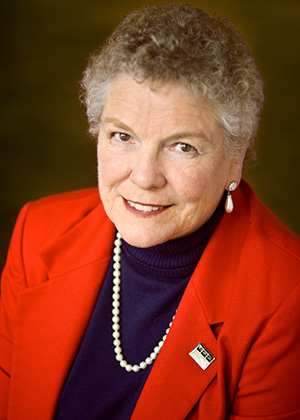Blog
Conversations with Kay, Part 2

Recently, we started a regular item featuring the life and nursing career stories of Kay McVay, a longtime intensive care unit RN at Kaiser Permanente and president emeritus of the California Nurses Association. In our last installment, she was explaining how the association, before leadership was taken over by staff nurses in 1993, looked down upon and ignored the concerns of RNs who worked at the bedside. She had just called CNA about a work problem and been given the brush off.
So what did you do then?
It wasn’t just me. Some Kaiser nurses were already working on this problem. I got this call and they asked me if I was happy with the new contract, and I said no. They said, “Well, we’re going to meet on Thursday down at the Lung Association in Oakland. Can you be there?” Sure, I said. So I started going, and in 1983, that turned into our group, RNs for Quality Care. And Martha Kuhl, who worked at Children’s Hospital in Oakland, had a group called SNAP, the Staff Nurse Action Project. We’d all been trying to figure out how we could change CNA to be more involved with the nurses. I think about 95 percent of CNA’s funds came from staff nurses, but they spent maybe 10 percent on us. We were the “Four K’s”: There was Kit Costello, Martha Kuhl, Marilynne Kenefick, and myself, Kay McVay.
We started going to their board meetings, and they were blown away that we would be at their meetings, because they’d never had anybody come before. There’s wasn’t a staff nurse on that board, believe me. So they decided, “Well, we’ll take care of that,” and they started holding their meetings down in Southern California. Well, it was very interesting. There were several of us who managed to get on a plane and go down to San Diego or to L.A. or wherever it was, and we’d be there. It was out of our own pocket.Wow, that’s determination. How did they respond to that?
When we still showed up, they started having these special meetings that they would have before the board meeting so that all the decisions and discussions had already taken place before they’d come into the board meeting.
So trying to participate in their meetings didn’t seem to work.
We were trying our very best to work within the system, and we did what we could do. So then we thought, we need to get at least one staff nurse on their board. Maybe if we got one, they’d listen to whoever it was, and we could get a little more done.
Did you manage to elect someone?
It took a couple of tries, but we finally got one person, Marilynne Kenefick, on the board. And they would not call on her to let her speak and her vote just did not count.
So what did you all do next?
Well, in the 1990s, CNA did this brilliant thing. They hired this woman down in Southern California by the name of RoseAnn DeMoro and brought her up to be the staff person in charge of the Economic and General Welfare division. The first time I met her, Children’s was out on strike and I went to the picket line to give them support, and we ended up having a conversation, and I came home, and I told my husband Richard, “My God, you know, this is the first time I’ve ever talked to anybody that actually understands what unions are about.”
And what are unions about?
Well, to understand what the problems are, what needs to be done to recognize the working person, to support the working person to be able to express themselves and to protect themselves. To understand the relationship between employers and employees, to help people understand what it means to be working class, that it’s okay, and that working class people together have the power and right to improve their lives.
Check back next issue to learn how the bedside nurses fought back and won leadership of their union.